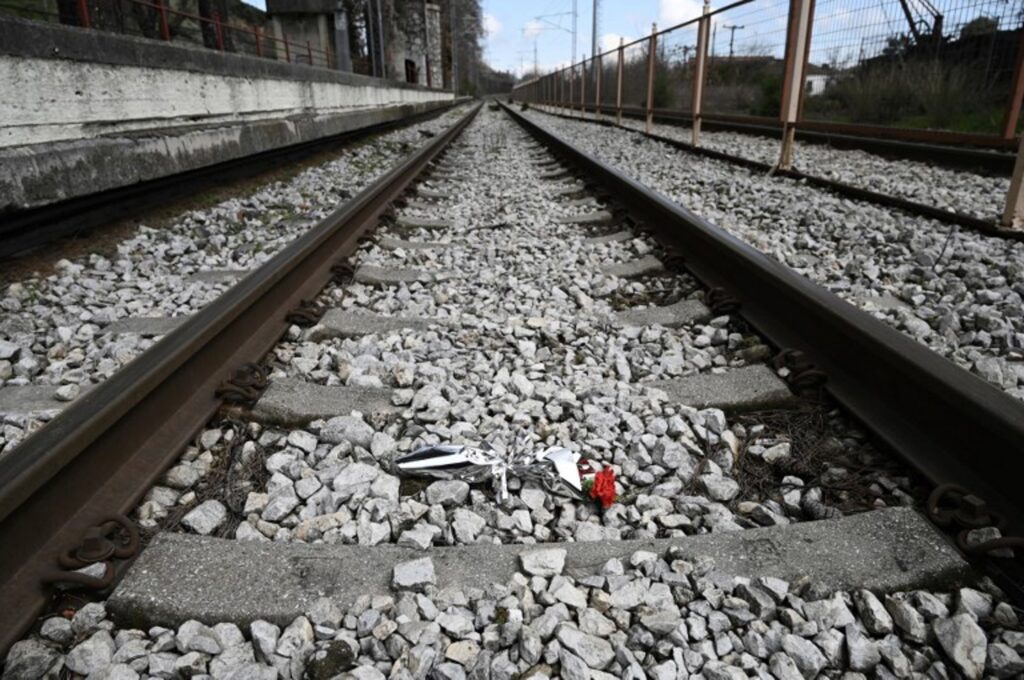The railway accident on 28 February on a section connecting Athens and Thessaloniki which caused the death of 57 people and was the worst train crash in Greek history has been investigated.
As previously reported, the accident sparked widespread angry, sometimes violent, and protests, and dealt a blow to the popularity of Kyriakos Mitsotakis’ conservative government ahead of snap elections now due to take place on 21 May. Since the accident, his party New Democracy has dropped in the opinion polls.
Greece’s transport minister resigned in the aftermath of the accident. Responsibility for the accident was attributed mostly to the station manager on duty at the time of the crash. But railway unions had long warned about the problems in the railways, noting its underfunding, staff shortages and frequent accidents.
A delegation of experts from the EU Agency for Railways (ERA) was initiated at the highest level of the European Commission and travelled to Greece on 8 March to assist the authorities in the modernization of the Greek railway system but did not participate in the investigation of the accident.
A special investigation commission was appointed by the Greek government and published its report last Friday.
According to Greek newspaper Kathimerini, the 228-page report assigns blame to both the unexperienced station master, who set the two trains on a collision course, and to the chain of Greek operators, the state-run railway company (OSE), which owns the infrastructure, its subsidiary (ERGOSE), responsible for building the infrastructure, the private train operator (Hellenic Train) and the Regulatory Authority (RAS).
Minister of State, Giorgos Gerapetritis, responsible for infrastructure and transport, said “it would be advisable for those who criticized the investigation commission for its objectivity and the government for its intentions to do their own self-criticism”.
Unfinished modernization
The report was made public so that there would be full transparency in a matter of major public interest but it may still leave some questions answered. A source in Athens told The Brussels Times that no politician was found responsible for the accident. “They appointed people in various positions and failed to ensure that those people did their job.”
The Greek official admitted that the report highlights serious human violations of the rules and systemic failings of a long-standing nature but argued also that most of the investigation commission’s recommendations had already been implemented or were being initiated by the ministry concerned.
A crucial point is the unfinished modernization of the railway system, which according to the critics could have prevented the accident. Strangely, the report argues that even when completed the modernization project would only have brought the Greek railway system to the point where other European systems have been since the 1970s.
An investigative report by a network of journalists claims that the crash was also a European failure. It involved considerable EU funding, trains owned by an Italian state-owned railway company (Ferrovie dello Stato) and a French contractor (Alstom), who was tasked already in 2016 with installing a new automated signaling system which is still not in operation.
The entire passenger train operation was privatized and sold in 2017 by the previous government party, the left-wing Syriza, to the Italian company as this was a precondition for further bailout loans. Not much has been mentioned in the Greek press about the Italian company’s responsibility for the safety of the trains in Greece.
Add to that a Greek construction company (Aktor), which is accused of violating the terms of its contracts and ERGOSE, which according to the investigative journalists was suspiciously lax in its oversight of the works.
Significant EU funding
Asked about the EU-funding, a spokesperson of the European Commission sent the figures to The Brussels Times. It appears that the upgrading and modernisation of the main TEN-T railway axis of Greece (Patras – Athens -Thessaloniki – Promachonas), including the signalling and communications system ERTMS, has been co-financed by EU Cohesion policy since 1994.
The amounts are huge but how much funding actually has been disbursed and used for its intended purpose is less clear. By the end of 2022, an amount of €30.5 million had been declared to the Commission for reimbursement.
From 1994 to 2013, more than €2.85 billion in Cohesion funding was paid to the Greek railway system. In the programming period 2014-2020, the EU allocation amounted at €270 million, out of which around €108 million have been paid so far. In the current period 2021-2027, around €423 million (EU and national contribution) are allocated to railways investments.
Additional funding for railway projects in Greece has been provided by the Connecting Europe Facility (CEF), altogether €697 million since 2014.
But according to Greece’s post-COVID recovery plan, there is a need for improvement of the railway system in Greece despite the support from EU funding until now. According to the Commission, the Greek authorities acknowledge the problems related to the management of the railways projects and have agreed to a series of reforms for the coming years as a priority in its recovery and resilience plan.
Among others, as part of a payment request under the plan, the Greek government passed a law in October to provide additional resources for the OSE (owner of the infrastructure) and ERGOSE (construction manager) and to improve the focus and coordination of the two companies by clarifying their respective responsibilities and improving their governance.
The full operational deployment of the European Rail Traffic Management System (ERTMS) by OSE is also included in the Greek recovery and resilience plan and is a milestone set for the end of 2023, to be examined under next payment request.
M. Apelblat
The Brussels Times

